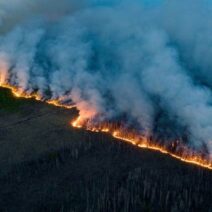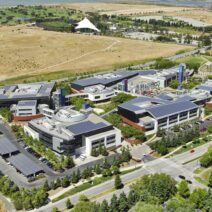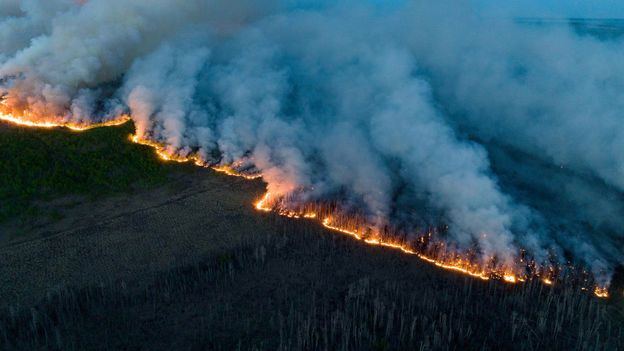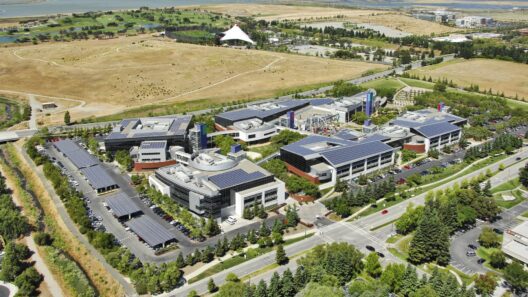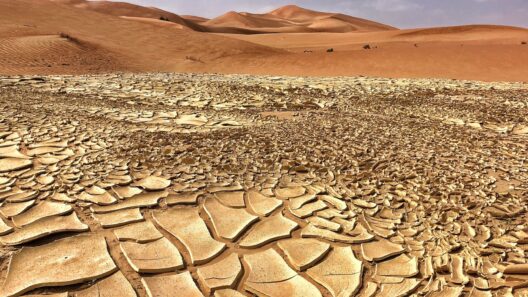Wildfires have become increasingly rampant in recent years, consuming vast swathes of forest and threatening ecosystems, human lives, and property. The complex interplay between wildfires and climate change raises a multitude of questions about causality, resilience, and human intervention. While the immediate triggers for wildfires—such as lightning strikes or human negligence—are often recognized, a deeper investigation reveals a concerning connection between the escalating frequency and intensity of these infernos and the inexorable consequences of climate change.
The rise in global temperatures is a consequence of anthropogenic greenhouse gas emissions. This warming phenomenon has markedly altered weather patterns, resulting in extreme conditions that foster wildfires. Droughts have become more pronounced in many regions, significantly lowering soil moisture levels and rendering vast areas particularly susceptible to combustion. These prolonged dry spells create a fertile ground for wildfires, as vegetation becomes parched and more likely to ignite.
Additionally, heat waves have intensified, creating an environment where fire can spread with alarming rapidity. The correlation between rising temperatures and increased wildfire activity is not merely coincidental; studies have illuminated the stark reality that as global temperatures climb, the likelihood and severity of wildfires escalate correspondingly. In fact, regions previously deemed safe from such natural disasters are now grappling with what was once an anomaly. This new norm invites scrutiny into how climate change fundamentally shifts not just geographical boundaries but ecological balances.
The smoke produced by wildfires serves as a potent reminder of their impact. Wildfire smoke is laden with harmful pollutants, including particulate matter that can have dire health implications for both those near fire zones and individuals residing far from the flames. The prevalence of wildfire smoke has increased as the climate crisis intensifies, posing significant public health risks, particularly to vulnerable populations. Respiratory ailments, cardiovascular issues, and other health concerns have surged, showcasing that the consequences of climate change and wildfires extend beyond environmental degradation—they directly affect human health and quality of life.
The implications are particularly dire as weather patterns continue to shift; for example, regions like the American West, Southern Europe, and Australia are experiencing unprecedented wildfire events. The Australian bushfires of 2019–2020 are illustrative—climate scientists have established a direct link between the intensity of these fires and climate change driven by an increase in temperature and prolonged drought conditions. The notion that wildfires are merely natural phenomena must be re-evaluated against the backdrop of a warming planet. What we are witnessing is not just a series of unfortunate events, but an unequivocal reflection of a climate system under siege.
The argument extends beyond mere causation to question the systemic failures ingrained in societal responses to these fires. In urban areas, expansion into wildland-urban interfaces has increased human vulnerability to wildfires. This encroachment is emblematic of a greater narrative: as human beings alter landscapes, they become increasingly susceptible to the very consequences of their actions. This begs the question of whether we can effectively manage and mitigate wildfire risks without addressing the overarching issue of climate change. Wise land management practices and strategic planning are desperately needed; however, they are insufficient if they do not grapple with the root causes of climate-induced wildfires.
Moreover, addressing the phenomenon of shifting fire regimes demands a holistic approach. Ecological restoration, sustainable land management, and effective firefighting resources should be prioritized. However, without earnest efforts toward reducing greenhouse gas emissions, these strategies are akin to placing a bandage on a festering wound. While some may argue that natural cycles account for wildfire occurrences, the empirical data indicates that the increasing severity and frequency of these events are overwhelmingly linked to human-induced climate changes.
Delving deeper, the societal fascination with wildfires often takes on a romanticized aspect. The destruction they render captivates and horrifies, drawing attention to nature’s unfathomable power. Yet this obsession obscures the profound challenges of climate change that fuel such events. Rather than framing wildfires merely as spectacles, it is vital to recognize them as harbingers of a larger disaster—one that threatens entire ecosystems and our existence.
In conclusion, the evidence is resoundingly clear: climate change is a significant driver of wildfires, exacerbating conditions that render landscapes tinder-dry and ripe for burning. The interplay between rising temperatures and prolonged droughts is not just an environmental concern but a public health crisis. As society reels under the mounting consequences, it is imperative to tread beyond observation and engage in robust action. Addressing climate change must be framed as a collective responsibility with immediate, far-reaching implications. The hard truth remains that our fate is intertwined with that of the planet; neglecting this connection only fuels the inferno of our own making.
